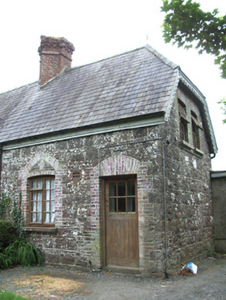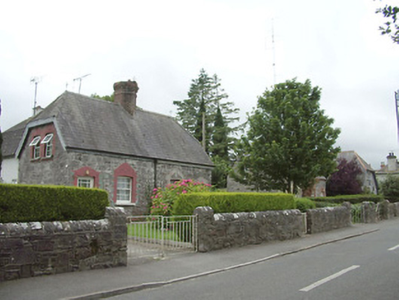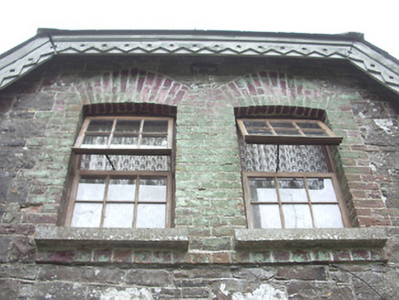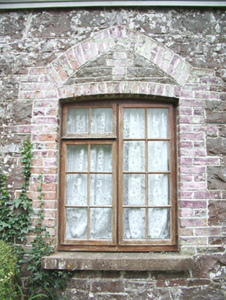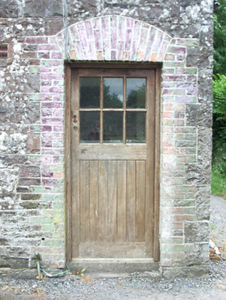Survey Data
Reg No
13312029
Rating
Regional
Categories of Special Interest
Architectural, Historical, Social
Original Use
Worker's house
In Use As
House
Date
1860 - 1880
Coordinates
220368, 268584
Date Recorded
21/07/2005
Date Updated
--/--/--
Description
Semi-detached two-bay single-storey former estate worker's house with attic storey, built c. 1870. One of a group of four. Now in use as private house. Twentieth century single-storey extension to rear (south). Half-hipped slate roof with overhanging eaves, (shared) hexagonal red brick chimneystack having moulded cornice and string courses, cast-iron rainwater goods, and decorative timber barge boards to gable (west). Snecked rock-faced stone walls. Segmental-headed window openings with red brick block-and-start dressings, stone sills, and replacement timber casement windows. Square-headed entrance opening with glazed timber door and red brick block-and-start dressings. Garden to front (north) and rear (south) with random rubble stone boundary wall, wrought-iron pedestrian gate, and rounded caps to gate piers with replacement double leaf gate. Located to the east end of Ardagh.
Appraisal
This attractive house is one of a group of four semi-detached houses to the east end of Ardagh. Although some alterations and replacement of characteristic features have taken place, the scale and form of houses, and gardens, are retained. They form a coherent group, which contributes positively to the streetscape, and to the character of Ardagh. The contrast between the gray limestone masonry and the red brick dressings to the openings creates a visually appealing composition. The well-detailed chimneystack on hexagonal-plan and the steeply pitched half-hipped roof creates an interesting silhouette. This building may have been constructed as part of the extensive works carried out by the architect James Rawson Carroll (1830 – 1911), for Sir Thomas Fetherston (between c. 1860 – 1865) in order to improve the village as a memorial to his uncle, Sir George Fetherston. It is one of a number of houses/buildings, of varying designs, in the village of Ardagh that collectively represent one of the most interesting collections of its type in north Leinster.

